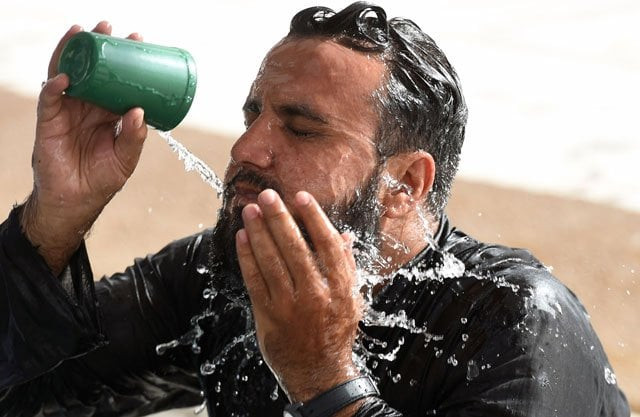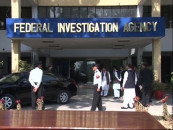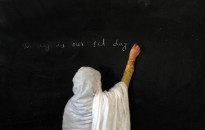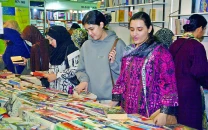City’s temperature up by 3 degrees Celsius
Experts suggest roof gardens, urban forests to prevent heat waves

Imagine a vast tract of prime land, blessed with temperate climate and a sprawling coastline dotted with beaches, creeks hosting migratory birds from afar, rare green and olive ridley turtles in addition to an inland crocodile sanctuary, shrines and a thriving seaport; a cosmopolitan habitat, famous for its diversity, housing people of almost all faiths and beliefs. And you would have rightly imagined Karachi on the eve of Independence in 1947.
Now imagine a cluster of humanity, being fattened every single moment of each passing day for over seven decades with fellow citizens from the remotest corners of the national boundaries, legal or illegal immigrants and refugees from neighbouring troubled lands and beyond; all pouring in by road, rail, air transport almost unchecked (rather facilitated in their journey by corruption at all levels); and, in the process making this land literally a hot property for greedy land grabbers: Welcome to Karachi 2021.
From day one of the new country, massive demand for housing accommodation, government and private offices, industrial buildings and commercial structures for its first federal capital. Planning was beaten hands down. A loot sale ensued.
The accompanying cropping up of a complex network of roads, highways, flyovers and underpasses replacing the natural plantation further turned the city into a concrete jungle.
Experts blame this race for 'concretization' of the landscape, the preference for a grey environment in total disregard for the green and healthy atmosphere for what eventually emerged as a city growing hotter by adding 3°C to its summer temperature in the last 60 years, according to the investigative report made by senior journalist M Nawaz Khuhro.
The Pakistan Meteorological Department's (PMD) data for over six decades reveals that from April 1961 to June 2021, Karachi's mean temperature of January rose by one degrees Celsius, February by 5.9 degrees Celsius, March by 2.1 degrees Celsius, April by 4.4 degrees Celsius, May 3.6 degrees Celsius and June by 1.2 degrees Celsius.
Dr Syed Raza Ali Gardezi, an environment expert and general secretary at Citizens for Environment, stresses that the construction frenzy in the name of development coupled with arbitrary tree hacking and no plantation gave rise to the Urban Heat Island (UHI) effect, which comes into play when cemented buildings absorb warmth of the sunlight during the day and emit it in the evening and night, causing high night temperatures.
He pointed out that the establishment of high-rise buildings in PECHS and other areas had caused the demolition of houses that once had lush green trees. Similarly, high-rise buildings in Gulistan-e-Jauhar and other parts of the city had also caused tree cutting, causing rise in the city temperature.
Read More: Karachi weathers hottest day of April since 1947
He suggested vertical gardens in all the new and old buildings besides establishment of rooftop gardens. "Solar panels should be used in place of generators, while wind turbines should be installed in coastal and other open areas."
Ahmed Shabbar, an environmentalist running the GarbageCan initiative, observed that Karachi generates 6.2 million tonnes of garbage on an annual basis. Out of this, 40 per cent is burnt at various places in the city contributing to the rise in temperature.
"Karachi could drown in future as sea level is rising due to melting of glaciers in the northern areas of the country," said Shuhab Usto, a civil rights lawyer and environment activist.
According to a Centre for Strategic and Contemporary Research report, besides UHI effect, the increase in the number of buildings has resulted in the urban canyon effect, the provision of multiple surfaces for the reflection and absorption of sunlight, ultimately increasing the city's temperatures.
The UN's Intergovernmental Panel on Climate Change (IPCC) says Karachi could experience conditions equivalent to the deadly 2015 heatwaves on an annual basis.
Dr Qutubuddin, a senior doctor at Dow University Hospital Karachi, said that high temperatures cause heat strokes, dehydration, exhaustion, muscle cramps, heat swelling, fainting and other diseases.
Pakistan Medical Association (PMA) General Secretary Dr Qaisar Sajjad said people should adopt preventive measures like staying under the shed of trees, buildings and houses instead of sunshine during the heatwaves.
Green cover
According to the US Environment Protection Agency, many communities are taking action to reduce UHI by increasing tree and vegetative cover; installing green roofs; using cool pavements, either reflective or permeable; and utilizing smart growth practices.
Though Sindh's forest cover is less than two per cent against 25 per cent UN standard, almost 20,000 trees have been hacked in the area between New Sabzi Mandi and the Cattle Market on Super Highway in the last 10 years, said National Forum for Environment and Health President Muhammad Naeem Qureshi.
Moreover, 7,500 trees were cut along both sides of the University Road; and over 15,000 chopped in different areas of Karachi in the name of development.
An iconic crusader for city planning, Orangi Pilot Project Director Parween Rahman had consistently waged a relentless struggle to achieve an ideal green environment instead of a grey future for the city. She had said that the city wants mega-management, not mega-projects. She was rewarded for her pursuit with bullets on March 13, 2013. Seven-and-a-half years later, many more megaprojects dot the city skyline.
The environmentalists are worried. But are the government and the city authorities? Seems not!
Published in The Express Tribune, September 20th, 2021.



















COMMENTS
Comments are moderated and generally will be posted if they are on-topic and not abusive.
For more information, please see our Comments FAQ